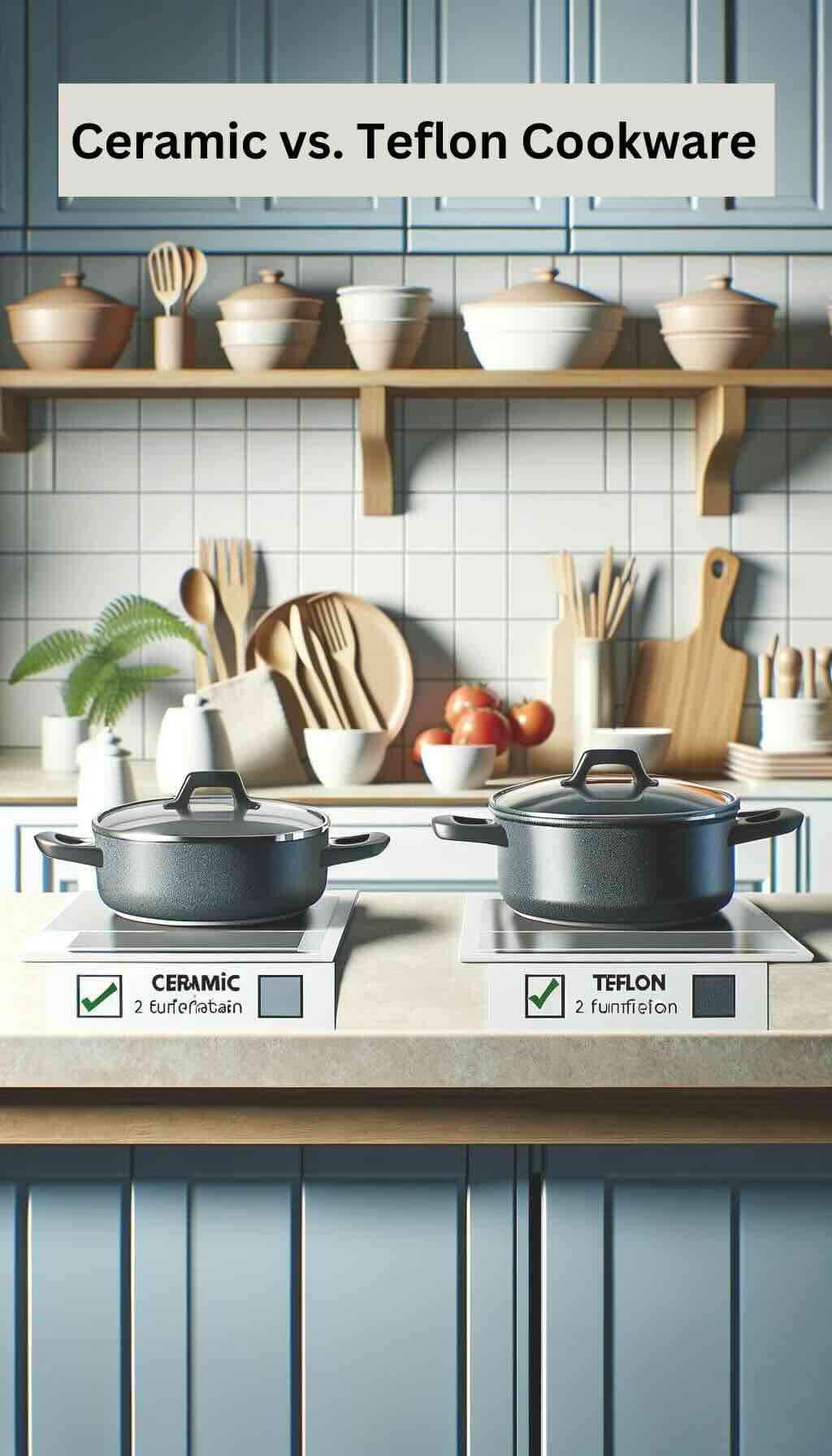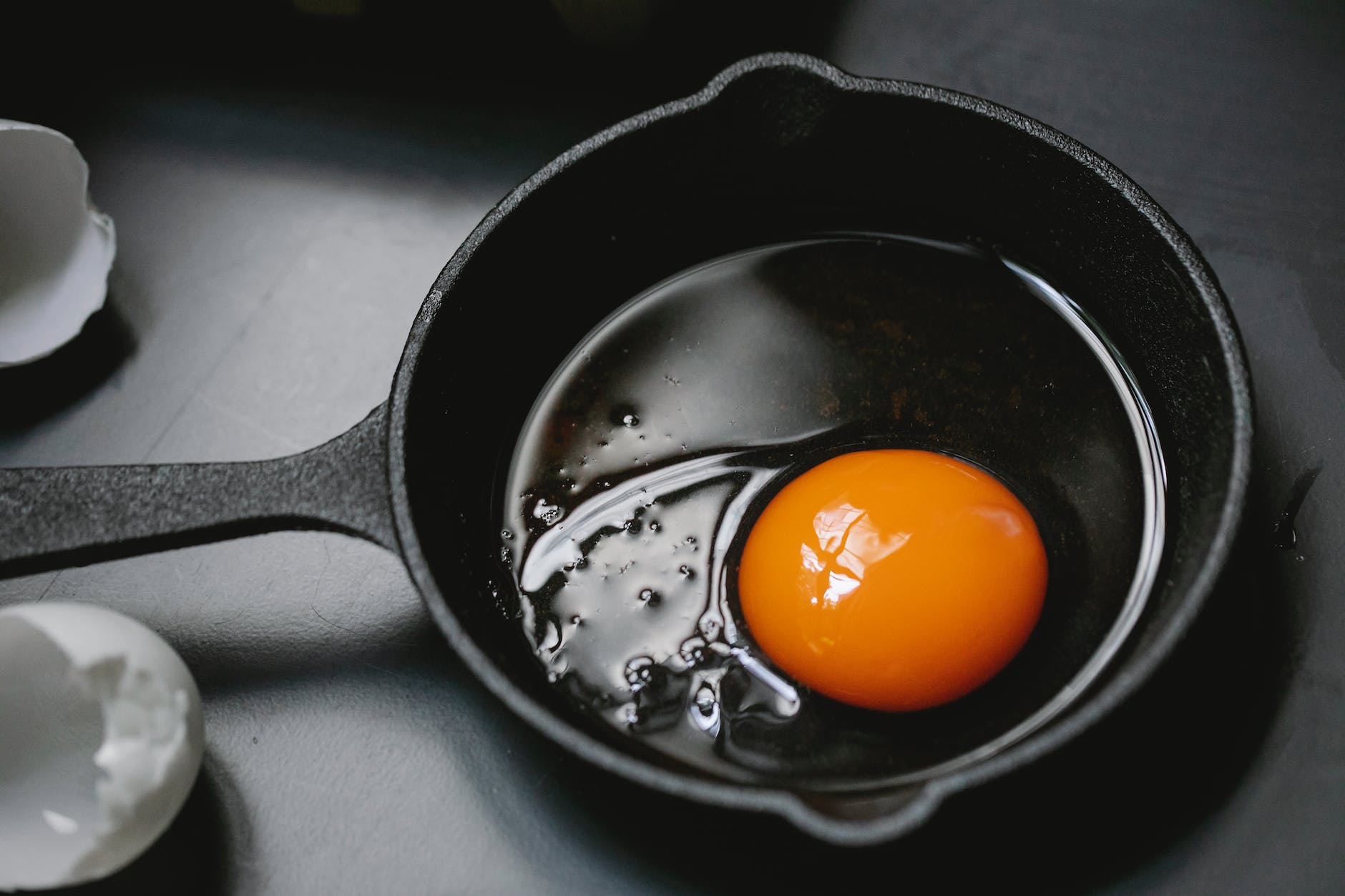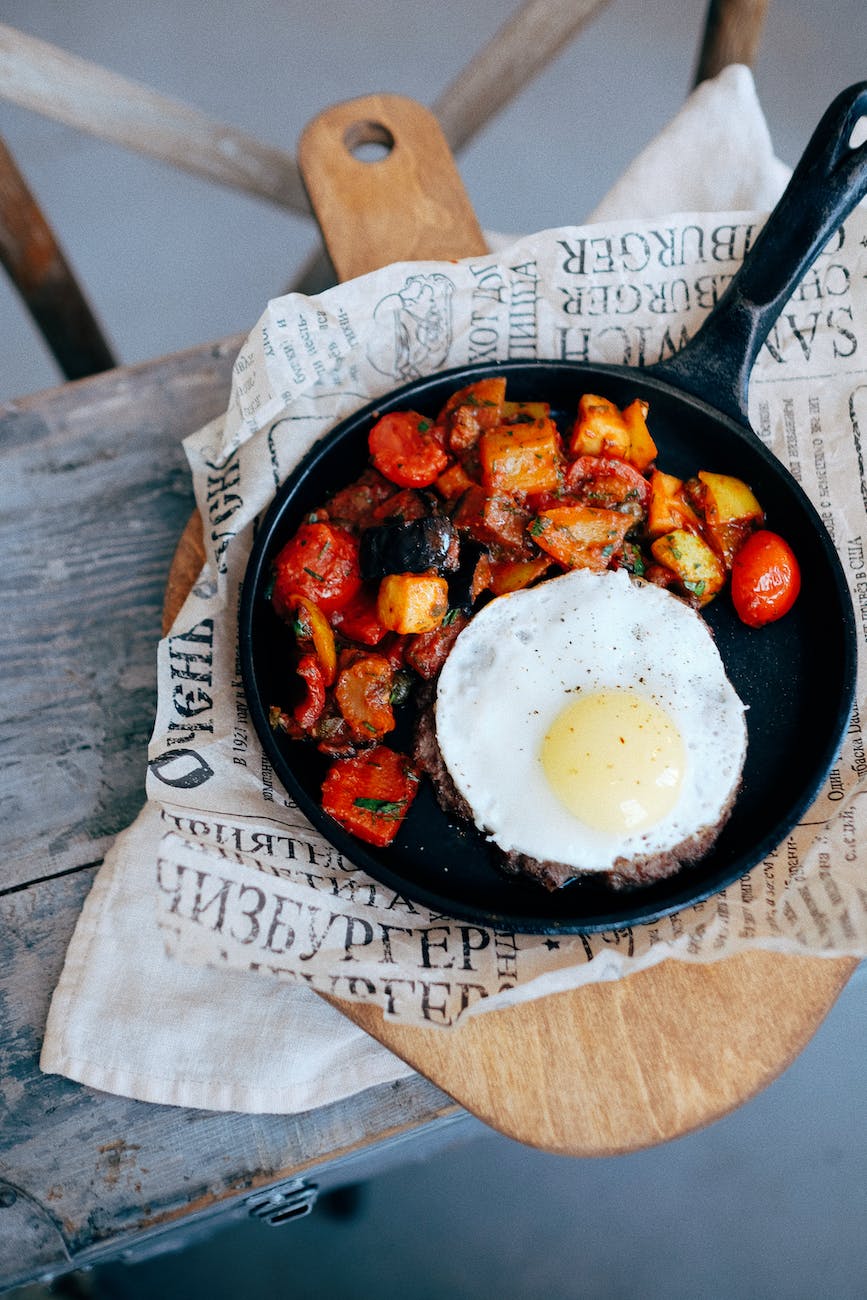
In the culinary world, the battle between ceramic and Teflon cookware is akin to an epic saga. Both claim the throne of the kitchen kingdom, offering promises of non-stick nirvana and hassle-free cleanups. But as any seasoned chef or home cook knows, the devil is in the details. Let’s slice through the marketing fluff and simmer down to the facts, helping you make an informed decision in the ceramic vs. Teflon debate.
The Contenders: Ceramic and Teflon Defined
Ceramic Cookware: Not your grandmother’s pottery but a modern iteration, ceramic cookware is metal (usually aluminum) coated with a silica-based gel. This gel, when cured, forms a non-stick surface. Praised for its eco-friendly credentials, ceramic cookware is often marketed as the green alternative, free from PFOA and PTFE.
Teflon Cookware: The brand name that became synonymous with non-stick, Teflon pans are coated with polytetrafluoroethylene (PTFE). Recent iterations are PFOA-free, addressing many health concerns that plagued earlier versions. Teflon’s legacy in the kitchen is built on its slick surface, ensuring that even the most tenacious dishes glide off with ease.
Health and Safety
The primary concern that cooks have when choosing between ceramic and Teflon is safety. Early Teflon pans raised eyebrows due to PFOA, a chemical used in manufacturing that was linked to various health issues. However, the industry has pivoted, and Teflon products sold today are PFOA-free, significantly reducing health risks.
Ceramic cookware, often lauded for its absence of chemicals like PFOA and PTFE, seems the safer bet at face value. However, the term “ceramic” can be misleading, as these pans are not made entirely of ceramic but are metal pans with a ceramic-like coating. The safety of this coating depends largely on its composition and quality, which varies by manufacturer.
Performance in the Heat of Battle
When it comes to performance, both contenders have their strengths. Teflon pans are renowned for their superior non-stick qualities, making them ideal for cooking delicate foods like eggs and pancakes. They’re also easy to clean and maintain, provided you keep them away from metal utensils and excessive heat.
Ceramic cookware, while offering a commendable non-stick surface, tends to lose its slickness over time, especially if frequently used at high temperatures. However, it excels in even heat distribution, a boon for dishes requiring precise temperature control.
Durability and Lifespan
Teflon pans, if treated with care (think wooden or silicone utensils and gentle cleaning), can offer several years of service. The key to longevity is avoiding scratches and overheating, which compromise the non-stick surface.
Ceramic cookware, despite its robust appearance, can be prone to chipping and wear, shortening its lifespan. Its durability largely depends on the quality of the coating and how well it’s maintained. Avoiding sudden temperature changes and harsh scrubbing can help preserve its life.
Eco-Friendliness and Ethics
Ceramic takes the cake in this round, with many brands emphasizing their use of natural materials and environmentally friendly manufacturing processes. The ability to cook effectively at lower temperatures also means less energy consumption.
Teflon, despite shedding its PFOA past, still carries the burden of its chemical lineage, raising concerns about the long-term environmental impact of its use and disposal.
The Verdict: Choosing Your Champion
The decision between ceramic and Teflon cookware boils down to personal preference, cooking style, and priorities. If health and eco-friendliness are at the top of your list, ceramic cookware might be your knight in shining armor. For unmatched non-stick performance and ease of use, Teflon remains a formidable contender.
Conclusion
No matter which side you choose in the ceramic vs. Teflon duel, the key to victory lies in informed use and care. By understanding the strengths and limitations of each, you can harness their powers to create culinary masterpieces worthy of legend. Remember, the best cookware is the one that meets your needs, elevates your cooking experience, and aligns with your values. Choose wisely, and may your meals be ever flavorful!
10 FAQs for Ceramic vs. Teflon Cookware
Is ceramic cookware safer than Teflon?
Both ceramic and modern Teflon cookware are considered safe for cooking, as they are PFOA-free. The choice between them should be based on personal preference and cooking style.
Can I use metal utensils with ceramic or Teflon pans?
It’s best to avoid metal utensils with both types to prevent scratching the non-stick surface. Opt for wooden or silicone utensils instead.
How long does ceramic cookware last compared to Teflon?
With proper care, Teflon pans can last several years, while ceramic cookware may show wear sooner due to its coating being more susceptible to chipping and degradation.
Are there any foods I shouldn’t cook in ceramic or Teflon pans?
Both types are versatile, but it’s advisable to avoid cooking at extremely high temperatures, especially with Teflon, to prevent the coating from breaking down.
How do I clean ceramic and Teflon cookware?
Hand wash both types with a soft sponge and mild detergent. Avoid abrasive cleaners and pads to maintain the non-stick surface.
Can ceramic and Teflon cookware go in the oven?
Check the manufacturer’s guidelines. Some Teflon and ceramic pans are oven-safe up to a certain temperature, but handles may limit oven use.
What are the environmental impacts of using ceramic vs. Teflon cookware?
Ceramic cookware is often touted for its eco-friendly production processes, while Teflon’s impact is more debated due to its chemical origins. However, the sustainability of cookware also depends on durability and lifespan.
Do ceramic pans cook food differently than Teflon pans?
Ceramic cookware may distribute heat more evenly and can often withstand higher cooking temperatures than Teflon without damage to the non-stick surface.
Why do my ceramic pans lose their non-stickiness over time?
The ceramic coating can wear down from overuse, high heat, or improper cleaning, leading to a reduction in its non-stick properties.
Can I restore the non-stick surface of my ceramic or Teflon cookware?
Once the non-stick surface is significantly damaged or worn, it cannot be restored to its original condition. Proper care is essential to extend the lifespan of your cookware.
Blog Tags
ceramic cookware, Teflon cookware, non-stick pans, kitchenware safety, eco-friendly cooking, cookware maintenance, cooking tips, kitchen gadgets, healthy cooking, sustainable kitchen











